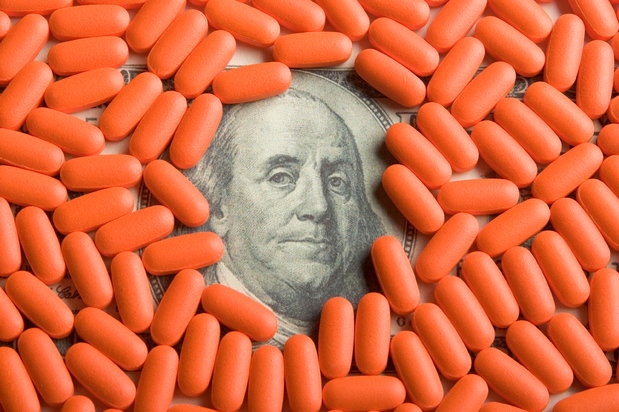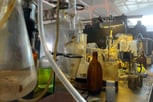In order to fully comprehend the severity of substance abuse in America, it may be helpful to take a “dollars and cents” approach. Scientists can classify addiction as a disease but this is still not effective enough to constitute a vote of sympathy from the majority of Americans. While social welfare and emotional appeals can only go so far, raw economic data makes logical sense for legislation reforms because once the public is aware of how expensive substance abuse really is, they will be more open to curbing the problem as quickly as possible.
The economic impact of illicit drug use on the American public is an immensely well-documented phenomenon. The U.S. Department of Justice’s National Drug Intelligence Center is in charge of compiling spending totals as well as estimates in order to paint a clearer picture of how costly drug use is to taxpayers. The most essential point of the NDIC report is understanding how the categorization of cost is assessed.
Areas of Cost
The NDIC breaks illicit drug use into three sections: crime, health and productivity. Health is generally thought to be the major concern with drug use but many people forget that incarceration and criminal prosecutors are extremely costly to the taxpayer. Productivity is a more abstract notion and the government looks at it from the angle of functionality. For instance, if you’re in jail, you’re not contributing services or economics to the nation. All of these avenues are included in the NDIC’s report and they do an extensive job at framing the true prices of illicit drug use.
The most recent report issued by the NDIC is from the 2007 calendar year. In total, the report finds that the nation spends more than $600 billion annually on drug, tobacco and alcohol use. Tobacco is included in the report, which is a possible point of contention, but by using the classification of any substance that is addictive as well as directly harmful, the grouping fits.
The NDIC finds that tobacco makes up $193 billion of the overall total. This calculation is based off of “attributable mortality, years of potential life lost and productivity.” Estimates on lives lost due to smoking total 443,000 every year. By taking the average life expectancy for a non-smoking citizen, the years are then subtracted, adding the loss of income for each “missed” year. Healthcare is the biggest cost for tobacco, accounting for $96 billion of the total $193 billion. Lung cancer and heart disease are the two biggest killers of smokers and each of these diseases is incredibly expensive to fight. There is a clear reason why insurance companies ask applicants if they smoke or not.
Indirect Effects
Illicit drug use accounts for $193 billion of the $600 billion in total costs. While healthcare for drug abusers is relatively low at $12 billion, the productivity loses account for $120 billion of the total cost. Productivity consists of “labor participation costs, treatment costs, hospitalization, incarceration and premature mortality costs.” The distinction between “productivity” and “crime” appears to be somewhat blurred but the study defines “crime costs” more along the lines of the criminal justice system rather than the actual effects of the perpetrator’s actions in the real world. Court appointed attorneys must be hired for defendants and these positions are directed paid by the federal government. The more offenders are sent to court, the higher the illicit drug costs go up.
The biggest vacuum of substance abuse spending comes in the form of alcohol which is estimated to annually cost $235 billion. Productivity and crime are the major factors that go into this total, but healthcare still makes up $30 billion, largely being linked to kidney failure and other health hazards. The collateral damage of alcohol is mainly what drives the totals due in part to car accidents and lives being lost to drunk driving. Alcohol is also the most commonly used substance, which makes the demographic larger and thus more costly.
While raw costs are important, perspective is still needed to understand just how big $600 billion is. In comparison the federal government allocated $118 billion for education in 2014. Yes, America loses more money to drugs and alcohol than it spends on education. If that stat isn't persuasive enough then just know that $600 billion is more than the annual GDP of 170 countries.
The Cold, Hard Truth
The point of using economic data is to prove the harsh reality of substance abuse. When drug abuse is discussed on the political platform the most commonly used phrase is the “War on Drugs” but this doesn’t even account for vast majority of federal spending. It completely leaves out issues of treatment, healthcare and losses in productivity. Combatting drug use via border security and police forces is a necessary function that must be carried out, but in comparison to the previous listed issues, its importance dwindles.
Other nations around the world have already come to the realization that fighting drug abuse is more difficult and costly than treating it. Portugal is one of the best examples of this technique, where they largely decriminalized drugs and instead used the funding towards education and treatment. The results are astounding as Portugal now has its lowest number of drug users in more than 15 years.
No matter what, substance abuse is an expensive situation. Nations and citizens alike will always have to partially finance any fight against it. The question thus becomes what method should be used to reduce the number of drug offenders, leading to lower totals of future spending. The “War on Drugs” has sucked more than a trillion dollars from America and even today the problem still remains with little to no signs of progress. Different methods must be utilized to treat and rehabilitate substance abusers, rather than simply putting them in “time-out” only to release them back into the world ready to use again. The cycle is vicious and unless action is taken to break such chaos the results will forever remain the same—a vast burden on the American taxpayer.
If you or someone you know is seeking help with substance addiction, please visit our directory of treatment centers or call 866-606-0182 to start the path to recovery today.








